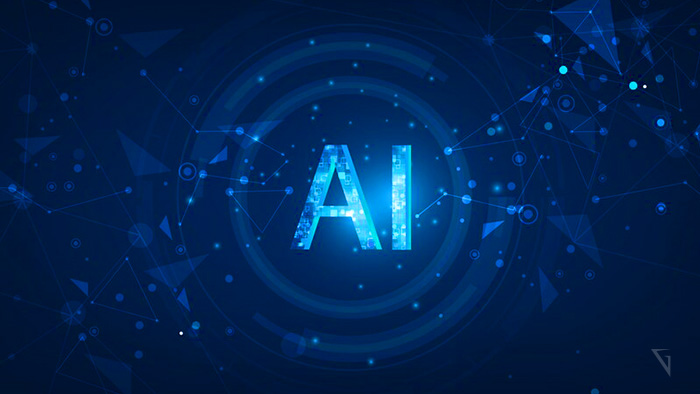

Welcome to the fascinating world of Artificial Intelligence (AI), where intelligent machines mimic human-like cognitive functions and transform industries worldwide. In this blog, we’ll embark on a journey to understand the fundamental aspects of AI, its history, impact on various sectors, ethical considerations, and its promising future.
At its core, AI refers to the simulation of human intelligence in machines that can perceive, reason, learn, and solve complex problems. These AI-powered systems use algorithms and data to make decisions and adapt based on experiences, much like the human brain. From voice assistants like Siri to autonomous vehicles and medical diagnosis systems, AI has penetrated almost every facet of modern life, revolutionizing how we interact with technology.
The seeds of AI were sown in the 1950s, as researchers and visionaries began exploring the possibilities of creating intelligent machines. Pioneering figures like Alan Turing and John McCarthy laid the groundwork for AI as a field of study. Over the years, AI experienced periods of rapid progress and stagnation, known as “AI winters.” However, advancements in computational power, big data, and machine learning algorithms have fueled the current AI revolution.
AI can be categorized into Narrow AI and General AI. Narrow AI, also known as Weak AI, is designed to perform specific tasks and excel at them. Examples include voice recognition, recommendation systems, and image classification. On the other hand, General AI, or Strong AI, is a hypothetical form of AI that possesses human-like intelligence and reasoning capabilities, capable of handling a wide range of tasks without human intervention. General AI remains a futuristic goal, as current AI systems are still limited to specific domains.
The influence of AI extends across numerous sectors, reshaping the way we live and work. In healthcare, AI aids in early disease detection, drug discovery, and personalized treatment plans. Financial institutions employ AI algorithms for fraud detection, risk assessment, and trading strategies. Industries such as manufacturing, transportation, and customer service leverage AI-powered automation to improve efficiency and deliver seamless experiences.
With the growing ubiquity of AI, ethical dilemmas emerge. Concerns related to data privacy, algorithmic bias, and job displacement need careful consideration. As AI systems learn from vast datasets, the risk of reinforcing societal biases becomes apparent. Striking a balance between innovation and responsible development is essential to ensure that AI benefits humanity.
As of the present day, AI has reached a remarkable stage of development, with rapid advancements and widespread applications in various industries. Thanks to cutting-edge research, technological breakthroughs, and the availability of vast amounts of data, AI has evolved beyond our expectations.
One of the key driving forces behind AI’s current stage is Machine Learning (ML), a subset of AI that enables systems to learn and improve from experience without being explicitly programmed. ML algorithms, such as decision trees, support vector machines, and neural networks, have proved instrumental in solving complex problems across domains.
Deep Learning, a specialized form of ML, has particularly revolutionized the field. Modeled after the human brain’s neural networks, deep learning architectures enable AI systems to process large datasets, extract intricate patterns, and perform tasks like image and speech recognition with unprecedented accuracy.
AI’s integration into everyday life has become increasingly evident. We interact with AI-driven virtual assistants on our smartphones, such as Apple’s Siri or Amazon’s Alexa, which use Natural Language Processing (NLP) to comprehend and respond to human commands. Social media platforms employ AI algorithms to curate personalized content and advertisements based on users’ preferences and behavior.
In the healthcare industry, AI is aiding medical professionals in diagnosing diseases, analyzing medical images, and predicting patient outcomes. AI-powered chatbots are becoming prevalent in customer service, streamlining query resolution and providing instant assistance.
Another area where AI has flourished is in autonomous systems. Self-driving cars, for instance, utilize AI technologies like computer vision and sensor fusion to navigate complex environments, making driving safer and more efficient.
Drones equipped with AI algorithms are deployed for tasks like surveillance, agriculture, and disaster response, enabling better data collection and decision-making. Moreover, the aviation industry relies on AI for flight path optimization and predictive maintenance.
Despite the impressive progress, AI still faces several challenges. The need for large amounts of data for training, concerns about privacy and security, and the risk of biased algorithms are ongoing issues. Additionally, the ethical implications of AI deployment, particularly in areas like facial recognition and autonomous weapons, warrant careful consideration.
Looking ahead, AI’s future seems boundless. Researchers and developers are exploring innovative solutions, such as Explainable AI, to provide transparency in AI decision-making. Continued research in General AI aims to bridge the gap between Narrow AI and human-like intelligence.
The future of AI is brimming with exciting possibilities. As technology advances, we may witness breakthroughs in areas such as natural language understanding, emotion recognition, and creativity. However, the development of AI also poses challenges related to regulations, transparency, and security. By addressing these challenges proactively, we can unlock the full potential of AI while safeguarding its responsible use.
AI represents a paradigm shift in human-machine interaction, shaping the way we live, work, and interact with technology. Understanding its definition, evolution, and ethical implications allows us to harness AI’s potential for the greater good. As we journey into the future, let’s embrace AI responsibly, making strides towards a more intelligent, equitable, and technologically empowered world.
OpenAI DevDay showcases the latest AI innovations, pushing technology’s boundaries in an ever-evolving landscape.
Explore the top 10 database types for software projects, their unique features, and which one…
Explore PWAs: Your FAQs Guide to Integrating Camera, Geolocation & Device APIs. Harness native features…
General Understanding of PWAs and SEO 1. What is a Progressive Web App (PWA)? A…
Understanding Offline-First Approach Basics 1. What is the concept of "Offline-First" in the context of…
General Overview 1. What are cross-platform frameworks, and how do they relate to Progressive Web…